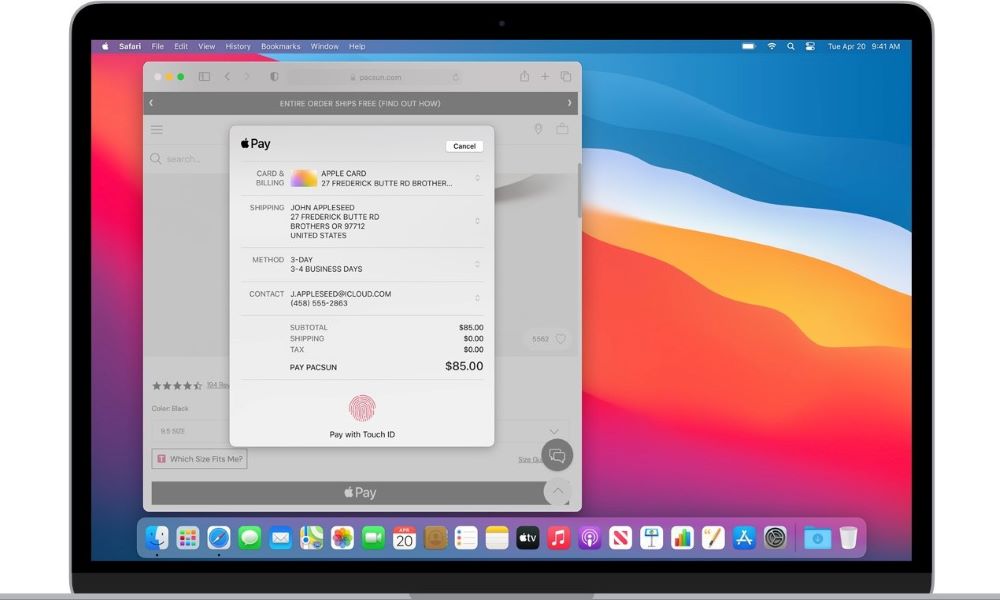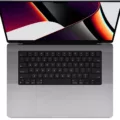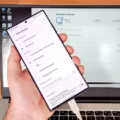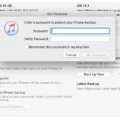Apple Pay has revolutionized the way we make payments, offering a convenient and secure way to pay for goods and services. With its integration into Mac devices, users can now enjoy the benefits of Apple Pay on their computers. However, like any technology, there may be instances where Apple Pay on Mac may not work as expected. In this article, we will explore how to set up Apple Pay on your Mac and provide troubleshooting tips if you encounter any issues.
Setting up Apple Pay on your Mac is a straightforward process. Simply follow these steps:
1. Click on the Apple menu in the top left corner of your screen and select “System Preferences.”
2. In the System Preferences window, locate and click on “Wallet & Apple Pay.” If you can’t find it, try scrolling down or using the search function.
3. Click on the “Add Card” button to begin the setup process.
4. If you’re not already signed in with your Apple ID, you will be prompted to sign in.
5. Enter your payment information, including your card details, billing address, and any other required information.
6. Once you’ve entered your payment information, click “Next” to verify your card. This verification process may differ depending on your bank or card issuer.
7. Follow any additional prompts to complete the setup process.
Now that you have set up Apple Pay on your Mac, you should be able to use it for online purchases, in-app purchases, and more. However, if you encounter any issues where Apple Pay is not working on your Mac, there are a few troubleshooting steps you can try.
1. Check compatibility: Ensure that the terminal or website you are trying to use Apple Pay with supports this feature. Not all merchants or websites may offer Apple Pay as a payment option.
2. Select the credit card manually: If Apple Pay is not automatically being recognized, try selecting the credit card manually from your Wallet app. Open the Wallet app on your Mac, locate the desired card, and click on it to use it for payment.
3. Update macOS: It’s important to keep your Mac’s operating system up to date. Check for any available updates by clicking on the Apple menu, selecting “System Preferences,” and clicking on “Software Update.” Install any pending updates and restart your Mac if necessary.
4. Clean your Touch ID sensor: If you are using a Mac with a Touch ID sensor for Apple Pay, ensure that both your fingers and the sensor are clean and dry. Use a clean, lint-free cloth to wipe off any dirt or debris on the Touch ID sensor. Make sure your finger covers the sensor completely when attempting to authenticate a payment.
5. Replace credit card in Wallet app: If all else fails, try removing and re-adding your credit card to the Wallet app. Open the Wallet app, locate the card that is not working, and click on the “i” icon. From there, you should have an option to remove the card. Once removed, follow the steps mentioned earlier to add the card back to your Wallet.
By following these troubleshooting steps, you should be able to resolve any issues you encounter with Apple Pay on your Mac. Remember to double-check compatibility, keep your macOS updated, and ensure your Touch ID sensor is clean. If the problem persists, reach out to Apple Support for further assistance.
Apple Pay provides a convenient and secure way to make payments on your Mac, and with these troubleshooting tips, you can overcome any hurdles you may encounter. Enjoy the ease and simplicity of Apple Pay on your Mac and experience a seamless payment experience.

How to Get Apple Pay to Work On Your Mac?
To set up Apple Pay on your Mac, follow these steps:
1. Open the Apple menu by clicking on the Apple logo in the top-left corner of your screen.
2. From the drop-down menu, select “System Preferences.” This will open the System Preferences window.
3. In the System Preferences window, locate and click on the “Wallet & Apple Pay” option. It should be represented by an icon of a wallet.
4. If necessary, scroll down within the sidebar to find the “Wallet & Apple Pay” option.
5. Once you’ve selected “Wallet & Apple Pay,” a new window will appear with the Apple Pay settings.
6. To add your card to Apple Pay, click on the “Add Card” button. If you are not already signed in with your Apple ID, you will be prompted to sign in.
7. Enter your payment information as prompted. This will typically include your card details such as the card number, expiration date, and cardholder name.
8. Follow any additional instructions and prompts to complete the setup process.
By following these steps, you should be able to successfully set up Apple Pay on your Mac and use it for convenient and secure payments.
Why is Your Apple Pay Touch ID Not Working On Your Mac?
There could be several reasons why your Apple Pay Touch ID is not working on your Mac. It is important to ensure that you have the latest version of macOS installed on your device. Apple regularly releases software updates that may include bug fixes and improvements, so updating your operating system can often resolve issues with Touch ID.
Additionally, it is crucial to keep your fingers and the Touch ID sensor clean and dry. Any dirt, debris, or moisture on either surface can interfere with the functionality of Touch ID. To clean the Touch ID sensor, you can use a clean, lint-free cloth to wipe off any dirt or debris. Ensure that your finger covers the Touch ID sensor completely when attempting to use it.
If you have recently applied lotion, oil, or any other substance to your hands, it may also cause issues with the Touch ID sensor. In such cases, it is advisable to wash your hands thoroughly and dry them before using Touch ID.
In some cases, the issue may not be related to your fingers or the sensor itself. It is worth checking if you have enabled Touch ID for Apple Pay in your Mac’s settings. To do this, open the Apple menu, go to “System Preferences,” and click on “Wallet & Apple Pay.” Ensure that you have the option for “Allow Payments on Mac” enabled.
If all else fails and your Touch ID is still not working, you may need to contact Apple Support for further assistance. They can help diagnose any hardware or software issues that may be causing the problem.
To troubleshoot Touch ID not working on your Mac, make sure you have the latest macOS version installed, ensure that your fingers and the Touch ID sensor are clean and dry, and check your settings to ensure Touch ID is enabled for Apple Pay.
Conclusion
Apple Pay is a convenient and secure way to make payments on your Mac and iPhone. By setting up Apple Pay on your Mac, you can easily make purchases online without the need to enter your credit card information each time. This not only saves time but also provides an added layer of security as your card details are not shared with merchants.
If you encounter any issues with Apple Pay not working on your iPhone, there are a few troubleshooting steps you can take. Firstly, ensure that the terminal you are using supports Apple Pay. If it does, try manually selecting your credit card from the Wallet app. Additionally, replacing your credit card in the Wallet app and signing out and back into your Apple ID may resolve any issues.
It is also important to ensure that you have the latest version of macOS installed on your Mac, as this can help resolve compatibility issues. Keeping your fingers and the Touch ID sensor clean and dry is also crucial for successful authentication. Use a clean, lint-free cloth to wipe off any dirt or debris on the Touch ID sensor and ensure that your finger covers the sensor completely.
Apple Pay provides a seamless and secure payment experience, making it a popular choice for users looking for a convenient alternative to traditional payment methods. By following the necessary steps and troubleshooting techniques, you can ensure that you have a smooth Apple Pay experience on both your Mac and iPhone.








